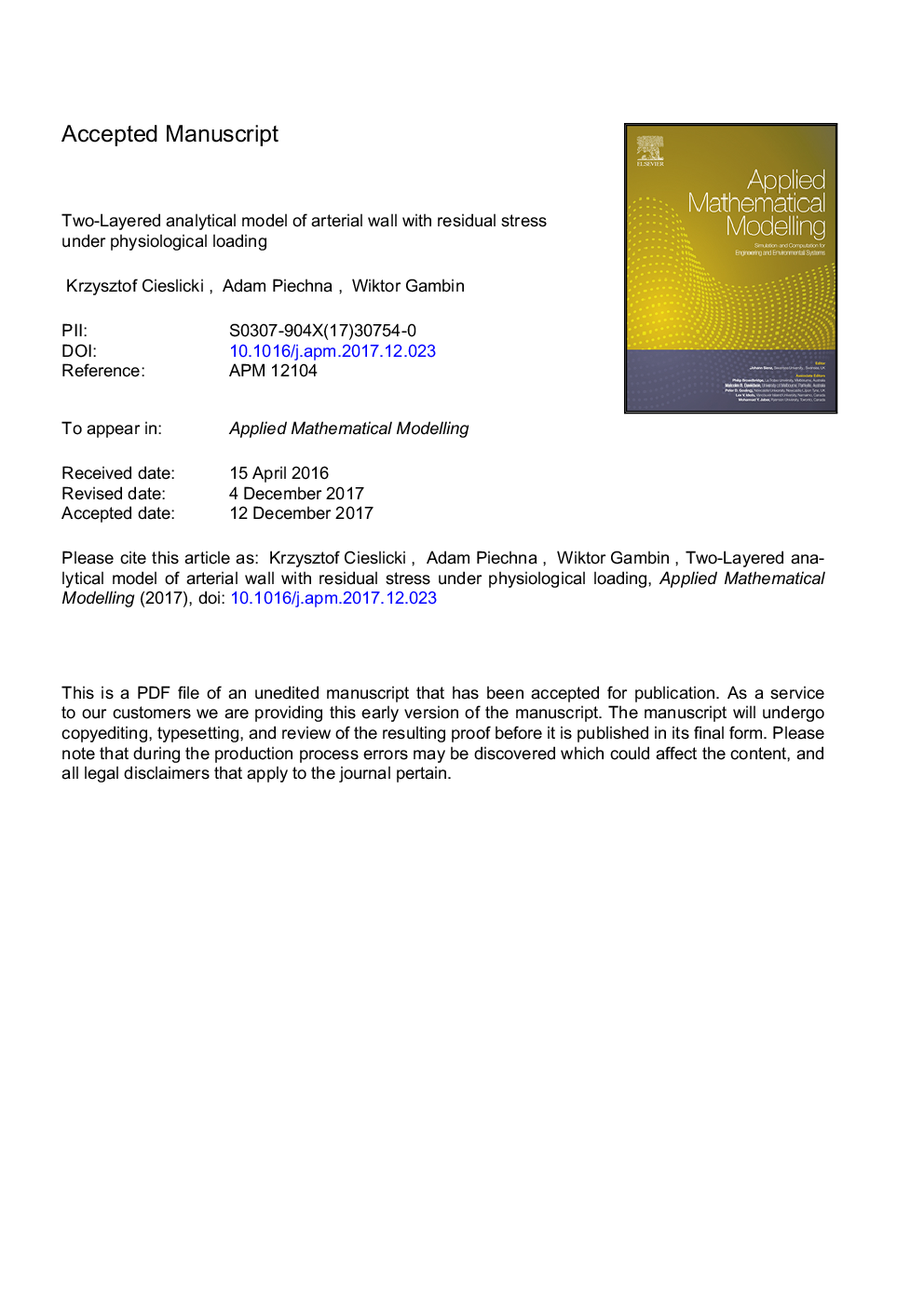ترجمه فارسی عنوان مقاله
مدل تحلیلی دو لایه دیواره شریانی با استرس باقی مانده در بارگیری فیزیولوژیکی
عنوان انگلیسی
Two-layered analytical model of arterial wall with residual stress under physiological loading
| کد مقاله | سال انتشار | تعداد صفحات مقاله انگلیسی |
|---|---|---|
| 151647 | 2018 | 24 صفحه PDF |
منبع

Publisher : Elsevier - Science Direct (الزویر - ساینس دایرکت)
Journal : Applied Mathematical Modelling, Volume 57, May 2018, Pages 52-63
ترجمه کلمات کلیدی
دیواره شریانی، استرس باقی مانده، لایه شریان، مدل تحلیلی، مدل عددی، بیومکانیک،
کلمات کلیدی انگلیسی
Arterial wall; Residual stress; Artery layers; Analytical model; Numerical model; Biomechanics;
ترجمه چکیده
تعداد زیادی از مدل های دیوار شریانی از سطوح مختلف پیچیدگی در ادبیات ارائه شده است. با این وجود، هیچ مدل شریانی تحلیلی گزارش نشده است که تأثیرات تنش باقی مانده را در نظر می گیرد. بنابراین، ما پیشنهاد و مطالعه یک مدل جدید دو لایه از شریان با دو نوع استرس باقی مانده است. غیر خطی هندسی ناشی از نازک شدن لایه ها به دلیل تنش های باقی مانده و بار فشار در نظر گرفته شد. خواص مواد از لایه ها با چند مدول جوان در بسته بندی محدوده سویه توصیف شد. نتایج بدست آمده با استفاده از مدل سازی عناصر محدود براساس رابطه تنش آلفا لاپاراسیون غیرخطی لایه های آدرنیتیای شریانی کاروتید مشترک که از ادبیات گرفته شده، مقایسه شده است. ما نشان می دهد که نیروهای پیش بارگیری باقی مانده به طور قابل توجهی توزیع استرس کلی در دیواره شریانی را تغییر می دهد. به طور خاص، استرس باقی مانده از خم شدن نقش اصلی در همگن سازی استرس را بازی می کند و توسط زاویه باز تعیین می شود. به نوبه خود، همپوشانی استرس های محیطی را در لایه های رسانه ای ضعیف کاهش می دهد، از این رو از عبور بیش از حد و پارگی آن محافظت می کند.

